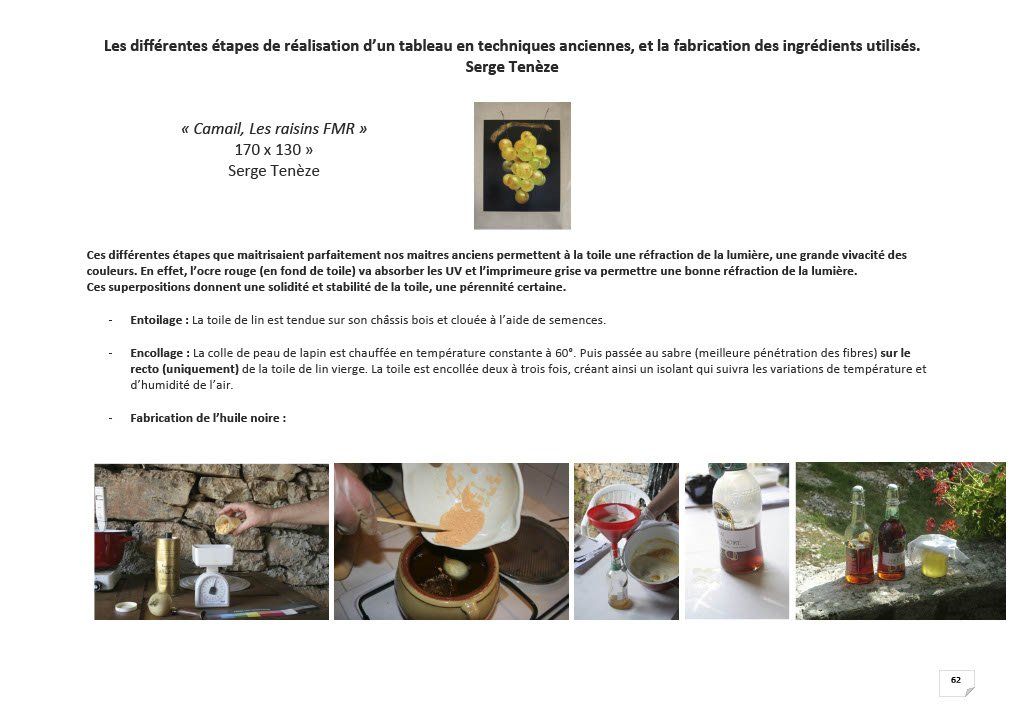The majority of the canvases presented are made using old techniques "to make the paint durable"... This sheet presents the method for preparing the supports with the greatest care, so as to make the work unalterable.
ancient techniques
I created these sheets for most "today's" apprentice painters...
They are aimed at all those who wish to perpetuate their work; those for whom the Fine Arts no longer transmit the knowledge of the ancients, which is nevertheless necessary for the proper understanding and mastery of the materials we use (linen, oils, essences, pigments, varnishes, etc.).
These sheets are the result of reading old treatises, practical experiences, listening to a few great masters, and research work. It aims to simplify these long searches for you. But painting is a huge adventure and requires a lot of work.
So good luck... or good luck...
Below is an outline for the creation of a canvas in ancient techniques.
Regularly enriched sheets follow.
New paragraph
Substrate preparation

| Fichier attaché | Taille |
| preparation_supports.jpg | 4.94 Ko |
| preparation_supports.pdf | 77.46 Ko |
| Les 3 phases préparation toile.JPG | 63.97 Ko |
Glueing rabbit skins

This sheet shows how to glue linen fabrics or wooden panels with rabbit skin glue.
| Fichier attaché | Taille |
| encollage_peaux_lapins.pdf | 970.23 Ko |
red printer

From the 16th to the 18th century, painters used a preparation using a red and then gray printer. Here is the red printer to pass on the canvas after gluing with skin glue. (this sheet is taken from my book/simplified recipes for ancient oil painting techniques, currently being written)
| Fichier attaché | Taille |
| La préparation des toiles : L’imprimeure Rouge | 1.13 Mo |
gray printer

From the 16th to the 18th century, painters used a preparation using a red and then gray printer. Here is the gray printer to pass on the canvas after the red printer. (this sheet is taken from my book/simplified recipes for ancient oil painting techniques, currently being written).
Color Stability (In progress)

- Study based, among others, on the work of Nicolas Wacker, Claude Yvel, François Perego, JP Brazs, P Garcia, X De Langlais, Leonardo da Vinci, J Maroger, and my own observations.Function of exposure to light , or in contact with the sulfur contained in the essence of turpentine, certain colors tend to blacken or turn. This sheet presents a cross table of solid and stable pigments to limit this phenomenon. It is not definitive, and regularly enriched.









